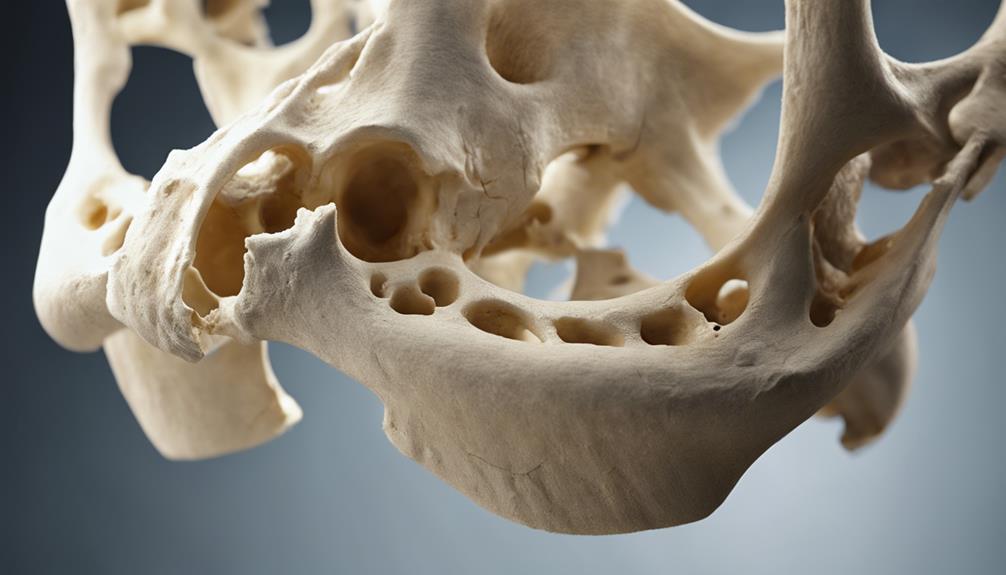Approximately 200 million people worldwide are affected by osteoporosis. It is crucial to recognize the significance of early detection in fighting this disease.
By utilizing the correct ICD-10 code for osteoporosis screening, healthcare providers can ensure proper identification of at-risk individuals and facilitate timely management strategies. But what are the specific guidelines for coding osteoporosis screenings, and how can accurate documentation impact patient care outcomes?
Let's explore the intricacies of using the ICD-10 code Z13.820 for osteoporosis screening encounters and delve into the broader implications of effective coding practices in promoting bone health.
Key Takeaways
- Early detection crucial for combating osteoporosis.
- Regular screening identifies at-risk individuals.
- Tailored treatments based on screening results.
- Coding accuracy vital for billing and reimbursement compliance.
Overview of Osteoporosis Screening ICD-10 Code
When considering osteoporosis screening, healthcare providers utilize the ICD-10-CM code Z13.820 for effective identification and management. This specific code, effective from October 1, 2023, in the 2024 edition, falls under the Factors Influencing Health Status and Contact with Health Services category. It's designated for the encounter for screening for osteoporosis. One key advantage of using the Z13.820 code is that it's exempt from Present on Admission (POA) reporting, streamlining the documentation process for healthcare professionals. Moreover, this code is grouped within MS-DRG v41.0, facilitating proper categorization and billing procedures.
Understanding the nuances of the ICD-10-CM code Z13.820 is crucial for healthcare providers aiming to screen for osteoporosis efficiently. By accurately utilizing this code, practitioners can ensure that patients receive timely and appropriate screening measures, leading to early detection and management of osteoporosis. Mastering the application of Z13.820 in clinical practice empowers healthcare teams to deliver comprehensive care while adhering to standardized coding protocols.
Importance of Early Detection

Early detection saves lives by identifying osteoporosis before serious complications like fractures occur.
Screening improves outcomes by allowing for timely interventions and treatments.
Prevention is key in managing osteoporosis and reducing risks associated with bone density loss.
Early Detection Saves Lives
Screening for osteoporosis plays a vital role in preventing fractures and complications by identifying individuals at risk of bone loss and fractures. Early detection through screening is crucial as it allows for timely intervention and management to prevent further bone deterioration.
Detecting osteoporosis early not only helps in recommending appropriate treatment but also enables healthcare providers to suggest necessary lifestyle modifications. Regular screening, particularly for postmenopausal women and older adults, is recommended to assess bone health accurately.
Screening Improves Outcomes
Enhancing health outcomes and reducing the impact of osteoporosis hinges significantly on timely identification through comprehensive screening methods. Screening plays a vital role in detecting osteoporosis early, enabling healthcare providers to intervene before complications arise.
By conducting regular screening tests, such as bone density scans, individuals at risk can be identified, allowing for the implementation of appropriate interventions to prevent fractures and bone density loss. Timely screening not only helps in the management of osteoporosis but also improves the overall quality of life for those affected.
Through screening, healthcare professionals can tailor treatment plans, monitor bone health effectively, and ultimately reduce the risk of fractures associated with osteoporosis, leading to better health outcomes.
Prevention Is Key
The key to effective prevention of osteoporosis lies in timely detection and intervention through comprehensive screening methods. Utilizing the ICD-10-CM code Z13.820 for screenings can help identify individuals at risk for fractures and bone health issues, enabling prompt interventions and management strategies. By encouraging regular osteoporosis screenings with this specific code, individuals can take proactive steps towards implementing lifestyle modifications and appropriate treatments to prevent complications associated with osteoporosis. This approach not only improves overall bone health but also enhances the quality of life for those at risk. Take a look at the table below for a quick overview of the benefits of early detection through osteoporosis screenings:
| Benefits of Osteoporosis Screening with ICD-10 Code Z13.820 |
|---|
| Identifies individuals at risk for fractures |
| Enables timely interventions and management |
| Facilitates implementation of lifestyle modifications |
| Guides appropriate treatments |
| Improves overall bone health and quality of life |
Coding Guidelines for Osteoporosis Screening

Let's start by discussing the coding guidelines for osteoporosis screening. Understanding the coding guidelines is crucial for accurate documentation and reimbursement.
We'll cover an overview of the guidelines and explain the criteria for reimbursement to ensure healthcare providers are well-informed.
Coding Guidelines Overview
Considering the importance of accurate coding for healthcare services, understanding the coding guidelines for osteoporosis screening is crucial for proper documentation and reimbursement.
- Assign ICD-10-CM code Z13.820 for 'Encounter for screening for osteoporosis.'
- Remember that Z13.820 belongs to the Factors Influencing Health Status and Contact with Health Services category.
- Utilize Z13.820 for billing and reimbursement purposes related to osteoporosis screening.
- Note that Z13.820 is within the Z00-Z99 range in the ICD-10-CM coding system.
Reimbursement Criteria Explanation
To ensure proper reimbursement for osteoporosis screening, understanding the criteria outlined in the coding guidelines is essential. The ICD-10-CM code Z13.820, effective from October 1, 2023, in the 2024 edition, is crucial for reimbursement purposes. This code, categorized under Factors Influencing Health Status and Contact with Health Services, specifically denotes the encounter for screening for osteoporosis. Importantly, Z13.820 is exempt from Present on Admission (POA) reporting and is grouped within MS-DRG v41.0.
Familiarizing oneself with the nuances of this code ensures accurate reimbursement for osteoporosis screening procedures, facilitating efficient healthcare service provision. Stay informed about the specific requirements and guidelines associated with ICD-10-CM Z13.820 to optimize reimbursement processes and support quality patient care.
Commonly Used ICD-10 Code
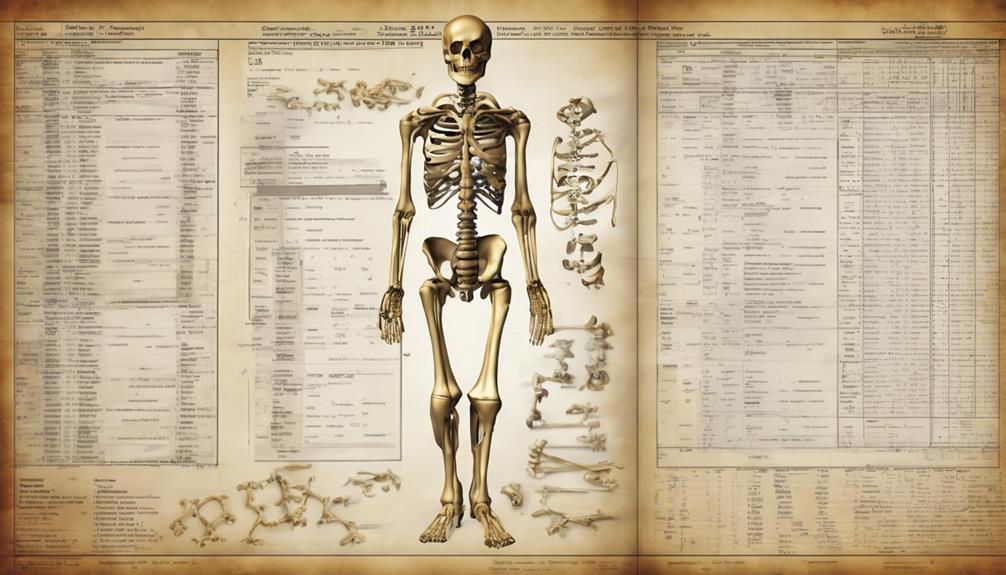
The commonly used ICD-10 code for osteoporosis screening is Z13.820, specifically designated for encounters related to screening for osteoporosis. When it comes to coding for bone density tests and osteoporosis screening, accuracy is crucial.
Here are some key points to consider:
- Identification: Z13.820 helps healthcare providers identify individuals at risk for osteoporosis through screening procedures.
- Proper Billing: Using the correct ICD-10 code ensures proper billing and coding during screenings for bone density, facilitating reimbursement processes.
- Treatment Selection: Accurate coding with Z13.820 aids in documenting the necessity for bone density tests, leading to appropriate treatment selections.
- Documentation: Proper documentation supported by the use of Z13.820 is essential for maintaining a comprehensive record of osteoporosis screening and bone health evaluations.
Documentation Tips for Accurate Coding
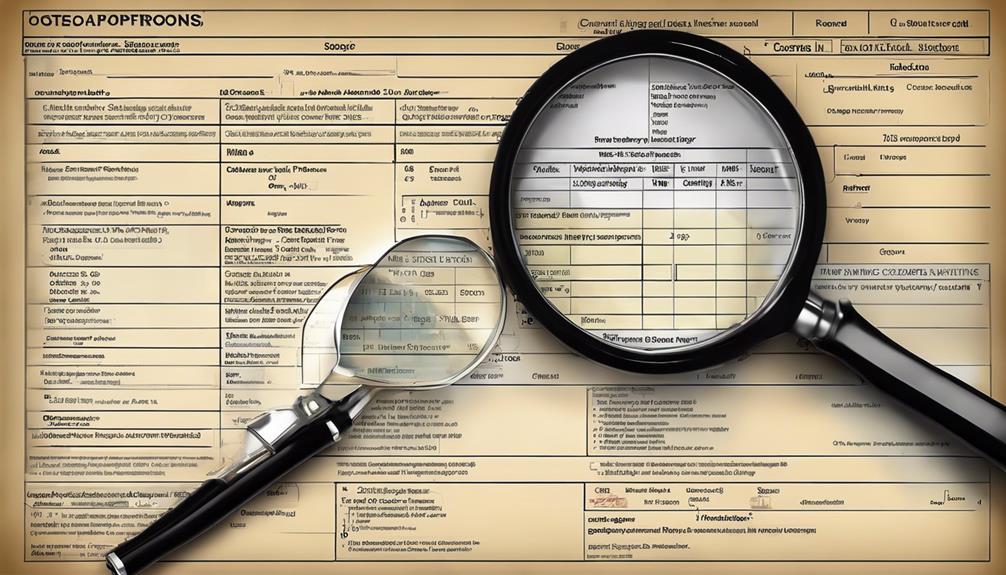
For accurate coding of osteoporosis screening encounters, meticulous documentation is essential to ensure proper ICD-10 code selection and billing accuracy. When documenting these encounters, it is crucial to specify the reason for the screening, including factors like age, risk factors, or family history. Additionally, documenting the screening method employed, such as a DEXA scan, provides vital context for accurate code selection. Mentioning any findings or results from the screening process in the documentation is also crucial for precise code assignment. It is important to consistently update and maintain detailed records of all osteoporosis screening encounters to ensure coding continuity and accuracy.
| Documentation Tips for Accurate Coding | Examples |
|---|---|
| Specify reason for screening | Age, risk factors, family history |
| Document screening method used | DEXA scan, ultrasound |
| Include findings/results from screening | T-score results, fracture risk assessment |
Reimbursement Considerations

Navigating the complexities of reimbursement for osteoporosis screening involves understanding the specific ICD-10 code Z13.820 designated for this purpose, effective in the 2024 edition of ICD-10-CM. When considering reimbursement for osteoporosis screening with Z13.820, here are some key points to keep in mind:
- Coding Accuracy: Ensure proper use of Z13.820 to accurately reflect the purpose of the encounter for osteoporosis screening.
- Reimbursement Rates: Familiarize yourself with the reimbursement rates associated with osteoporosis screening under Z13.820 to optimize billing.
- Coverage Policies: Stay informed about insurance coverage policies regarding osteoporosis screening to avoid claim denials.
- Documentation Requirements: Maintain thorough documentation supporting the necessity of osteoporosis screening to substantiate claims and facilitate reimbursement processing.
Understanding these reimbursement considerations related to ICD-10 code Z13.820 is essential for healthcare providers seeking proper compensation for osteoporosis screening services.
Diagnosis Code Z13.820 Details
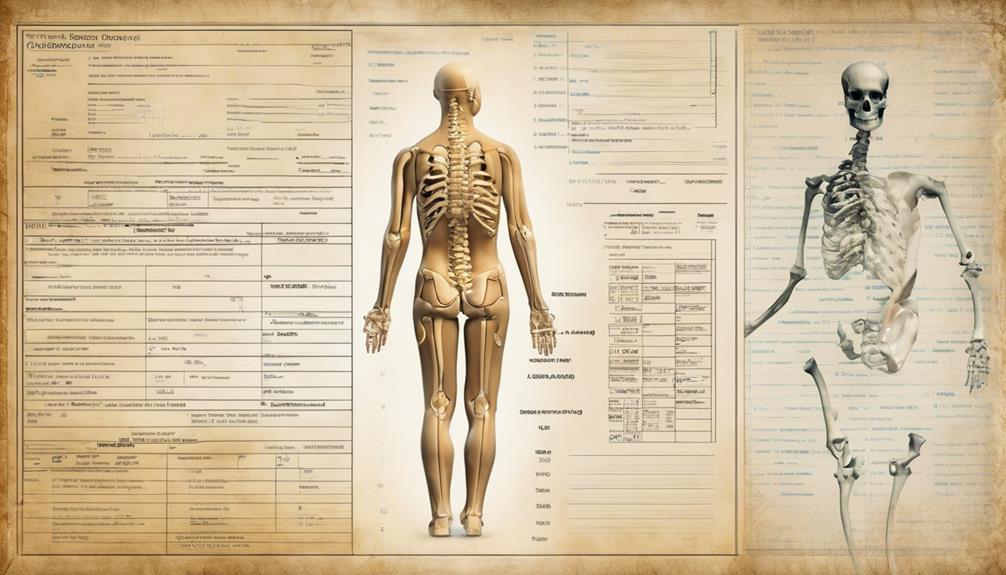
Let's explore the key points related to Diagnosis Code Z13.820.
We'll discuss the importance of osteoporosis screening, provide an overview of risk factors, and summarize screening guidelines.
These details are crucial for healthcare professionals to accurately document and code encounters for osteoporosis screening.
Screening Importance Explained
Understanding the importance of osteoporosis screening is crucial for identifying individuals at risk and ensuring accurate billing and coding using diagnosis code Z13.820.
- Early Detection: Osteoporosis can be asymptomatic until a fracture occurs; screening allows for early detection.
- Guiding Treatment: Screening results, often obtained through a DEXA scan, guide healthcare providers in determining appropriate treatment plans.
- Preventive Measures: Identifying individuals at risk enables the implementation of preventive measures to reduce the likelihood of fractures.
- Healthcare Cost Reduction: Early identification and management of osteoporosis can lead to reduced healthcare costs associated with treating fractures.
Screening for osteoporosis through Z13.820 not only aids in early detection but also plays a significant role in preventive care and cost-effective healthcare management.
Risk Factors Overview
Screening for osteoporosis through diagnosis code Z13.820 is crucial for identifying individuals at risk based on specific factors such as age, gender, family history, and lifestyle choices that can impact bone health.
Factors such as age play a significant role, with women over 50 and men over 70 being at higher risk. Additionally, behaviors like low calcium intake, vitamin D deficiency, smoking, and excessive alcohol consumption can increase the likelihood of developing osteoporosis.
Sedentary lifestyles, long-term steroid use, and low body weight are also factors that can make individuals more susceptible to this condition. Early detection through an encounter for screening is essential to prevent fractures and effectively manage bone health in those at risk.
Screening Guidelines Summary
In the realm of osteoporosis screening, the diagnosis code Z13.820 serves as a crucial tool for identifying individuals at risk based on specific factors such as age, gender, family history, and lifestyle choices impacting bone health. When considering screening guidelines summarized under ICD-10-CM Z13.820, we focus on:
- Using this code for encounters specifically aimed at screening for osteoporosis.
- Placing Z13.820 under Factors Influencing Health Status and Contact with Health Services.
- Knowing that this code is exempt from Present on Admission (POA) reporting requirements.
- Understanding that Z13.820 falls within the Z00-Z99 range for non-disease or injury circumstances in the 2024 ICD-10-CM edition.
These guidelines are essential for accurate billing and coding during osteoporosis screening encounters.
Frequency of Osteoporosis Screenings
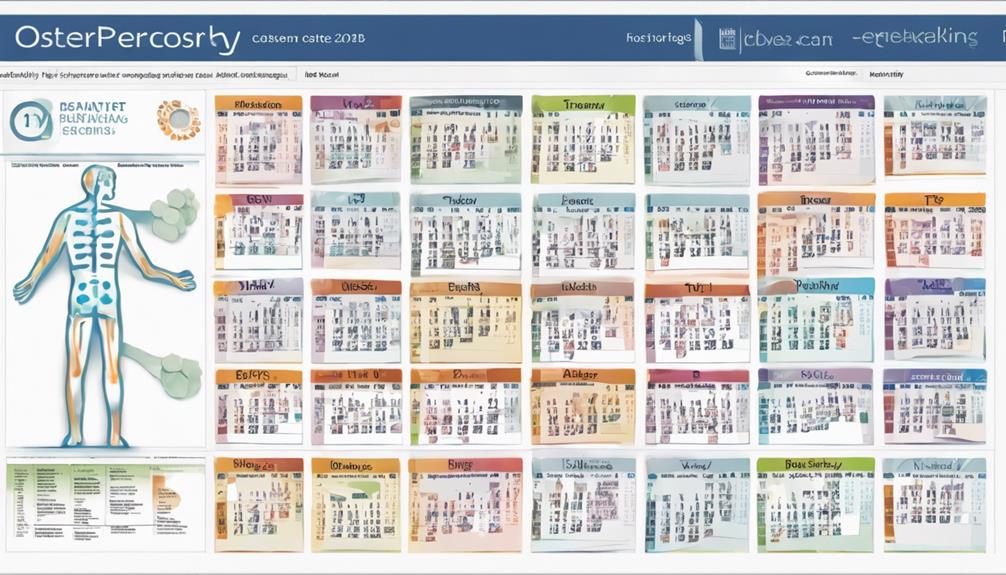
For individuals at increased risk, the frequency of osteoporosis screenings is crucial in maintaining bone health and preventing complications. Osteoporosis screenings are recommended for women aged 65 and older and men aged 70 and older as part of routine preventive care. However, individuals with risk factors such as fractures, low body weight, or a family history of osteoporosis may need screenings earlier. Bone density tests, like DEXA scans, are commonly used for osteoporosis screening due to their accuracy in measuring bone strength.
The intervals at which screenings should occur can vary based on individual risk factors and initial test results. Generally, if initial screenings are normal, repeating the test every two years may be sufficient. For those with abnormal results or higher risks, more frequent screenings may be necessary to monitor bone health closely. Early detection through regular screenings enables healthcare providers to intervene promptly and implement preventive measures to reduce the risk of fractures and complications associated with osteoporosis.
Coding Challenges and Solutions
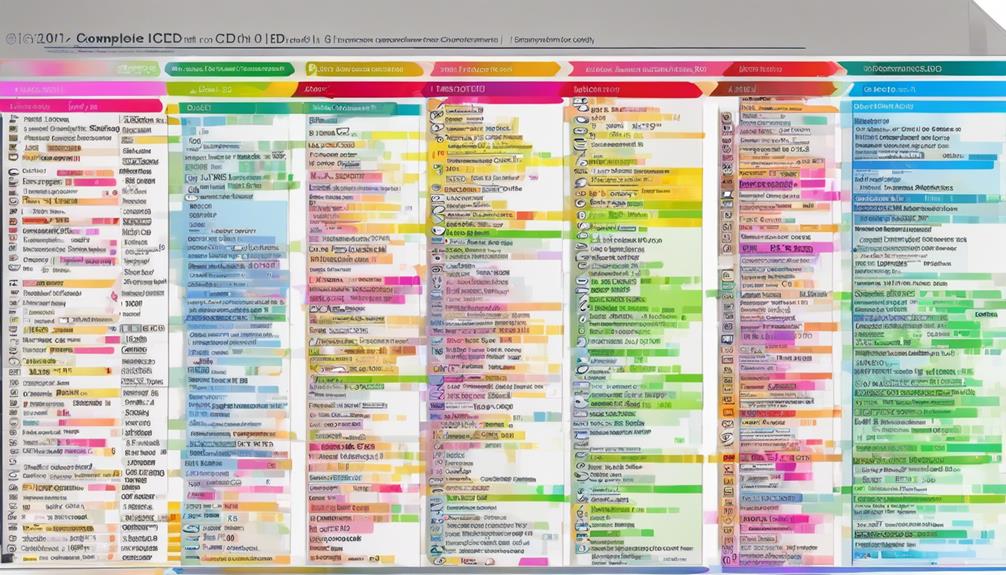
Navigating the complexities of coding for osteoporosis screenings can present challenges, yet understanding the nuances of ICD-10 codes like Z13.820 is essential for accurate documentation and reimbursement. When dealing with the ICD-10-CM code for osteoporosis screening, there are specific challenges that healthcare professionals may encounter, along with solutions to address them:
- Code Specificity: Ensuring that the Z13.820 ICD-10 code is used solely for osteoporosis screening and not for other conditions requiring screening is crucial for proper documentation.
- Documentation Clarity: Providing detailed documentation of the screening process and results can help support the medical necessity of the procedure, leading to appropriate reimbursement.
- Coding Compliance: Staying updated on any revisions or additions to the ICD-10-CM coding system related to osteoporosis screenings is vital to maintain accurate coding practices.
- Educational Outreach: Conducting training sessions for staff members involved in coding to enhance their understanding of the nuances of ICD-10-CM coding for osteoporosis screenings can improve coding accuracy and efficiency.
Future Trends in Osteoporosis Coding

Exploring potential advancements in osteoporosis coding reveals a landscape of evolving guidelines and technologies. Updates to screening guidelines and recommendations are anticipated to enhance the accuracy of osteoporosis diagnosis.
Advancements in technology hold the promise of more precise diagnostic tools for osteoporosis screening, leading to improved patient outcomes. Changes in healthcare policies and reimbursement models may influence how osteoporosis screening is coded and billed, necessitating ongoing collaboration between healthcare providers and coding experts to ensure accurate documentation and coding practices.
Furthermore, ongoing research in the field of osteoporosis may prompt the introduction of new diagnostic examination codes or modifications to existing codes for better identification and management of the condition. Staying abreast of these future trends is crucial for healthcare professionals to effectively navigate the evolving landscape of osteoporosis coding and provide quality care to patients in need.
Frequently Asked Questions
What Is the CPT Code for Osteoporosis Screening?
The CPT code for osteoporosis screening using a dual-energy X-ray absorptiometry (DEXA) scan is 77080.
This code is essential for bone density studies to screen and monitor osteoporosis, helping healthcare providers assess bone health and fracture risk accurately.
Proper use of CPT code 77080 ensures correct coding and billing, facilitating appropriate reimbursement for osteoporosis screening services.
What Diagnosis Code Should Be Used for a Bone Density Test?
For a bone density test, the appropriate diagnosis code to use is Z13.820.
This code is crucial for accurately billing and coding the screening process and helps healthcare providers identify individuals at risk for osteoporosis.
By ensuring the correct diagnosis code is used, we can promote early detection and proper management of osteoporosis through timely bone density tests.
Z13.820 is key to selecting the right treatment for bone health.
What Is the Age Limit for Z13 820?
We want to clarify that there's no age limit for ICD-10-CM code Z13.820 when it comes to osteoporosis screening. This code is meant for anyone undergoing such screening, regardless of age.
Healthcare providers have the flexibility to use Z13.820 for osteoporosis screening in individuals of any age. It's a versatile code that covers this specific type of assessment without age restrictions.
What Is the ICD-10 Code for Z78 0?
The ICD-10 code Z78.0 is essential for documenting screening encounters for osteoporosis. It aids in tracking at-risk individuals who require further evaluation. Proper use of this code ensures accurate billing and coding for osteoporosis screening services.
Z78.0 isn't for diagnosing osteoporosis but specifically for screening purposes. Healthcare providers rely on this code to identify individuals who may need preventive measures or interventions related to osteoporosis.
Conclusion
In the intricate world of healthcare coding, the ICD-10 code for osteoporosis screening serves as a beacon of light, guiding providers towards early detection and intervention.
Like a compass pointing towards better bone health outcomes, accurate coding ensures timely management and treatment for at-risk individuals.
By mastering the nuances of coding guidelines and documentation, healthcare professionals can navigate the challenges of osteoporosis screening with precision and expertise, paving the way for improved patient care.




